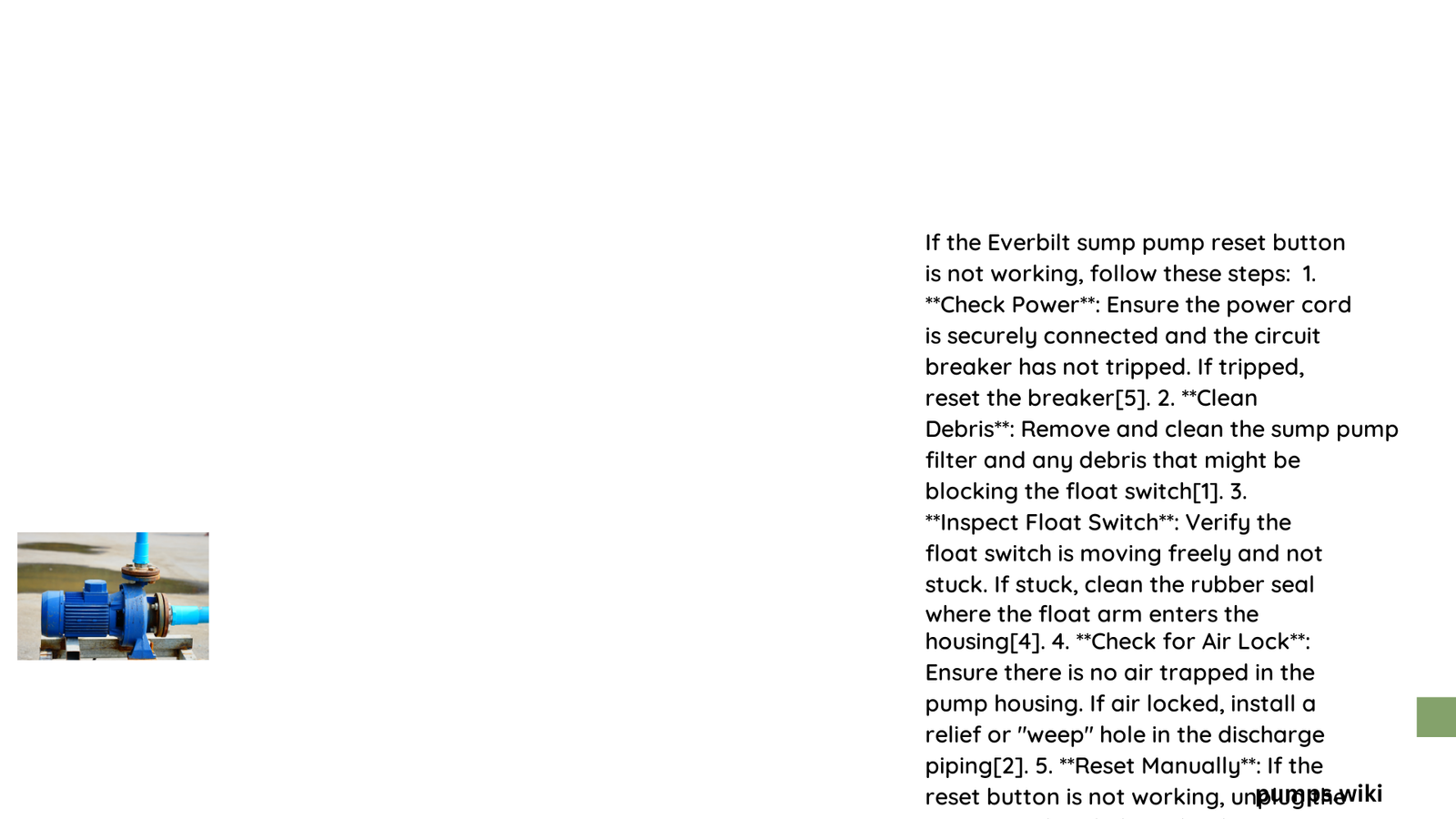When your Everbilt sump pump’s reset button fails, it can signal potential electrical, mechanical, or operational issues that compromise your basement’s flood protection. Homeowners often encounter challenges with reset mechanisms that prevent proper pump activation, potentially exposing their property to water damage risks. Understanding the underlying causes and implementing systematic diagnostic approaches can help restore your sump pump’s critical functionality and ensure reliable water management.
What Causes Everbilt Sump Pump Reset Button Failure?
Why Does the Reset Button Stop Working?
Sump pump reset button malfunctions typically stem from several critical factors:
- Electrical Issues
- Tripped circuit breakers
- Unstable power supply
-
Damaged electrical connections
-
Thermal Protection Mechanisms
- Motor overheating
- Excessive operational strain
-
Blocked ventilation pathways
-
Mechanical Complications
- Impeller obstructions
- Float switch malfunction
- Accumulated debris
How to Diagnose Reset Button Problems?
Preliminary Inspection Checklist
| Diagnostic Area | Potential Issue | Recommended Action |
|---|---|---|
| Power Supply | Loose connections | Verify secure electrical connection |
| Circuit Breaker | Tripped switch | Reset breaker, check amperage |
| Motor Temperature | Overheating | Allow 30-minute cooling period |
| Float Mechanism | Restricted movement | Clean and reposition float switch |
What Are the Step-by-Step Troubleshooting Techniques?
Comprehensive Reset Button Recovery Process
- Power Verification
- Unplug the sump pump
- Check power cord for visible damage
- Confirm circuit breaker status
-
Verify voltage requirements (115V, 60 Hz)
-
Thermal Reset Protocol
- Disconnect power source
- Allow motor to cool for 30 minutes
- Inspect for any visible obstructions
-
Reconnect and test pump functionality
-
Mechanical Assessment
- Remove pump from sump basin
- Clean impeller thoroughly
- Check float switch mobility
- Examine discharge pipes for blockages
What Professional Tools Might You Need?
Essential diagnostic equipment includes:
– Multimeter
– Flathead screwdriver
– Flashlight
– Work gloves
– Bucket for water drainage
When Should You Consider Professional Replacement?
Warning Signs Indicating Potential Replacement:
– Persistent reset button failure
– Recurring thermal protection trips
– Unusual grinding or scraping noises
– Inconsistent pump activation
– Age of pump exceeding 7-10 years
Pro Maintenance Tips
- Perform quarterly sump pump inspections
- Keep sump basin clean
- Ensure proper ventilation
- Monitor float switch functionality
- Use surge protectors
Technical Specifications to Remember
Operational Parameters:
– Voltage: 115V
– Frequency: 60 Hz
– Recommended Circuit: 15 Amp
– Temperature Range: 32°F – 95°F
Preventive Maintenance Recommendations
- Annual professional inspection
- Regular debris removal
- Test pump functionality seasonally
- Maintain clean sump basin environment
Note: Always prioritize safety and consult professional technicians if complex issues persist.

